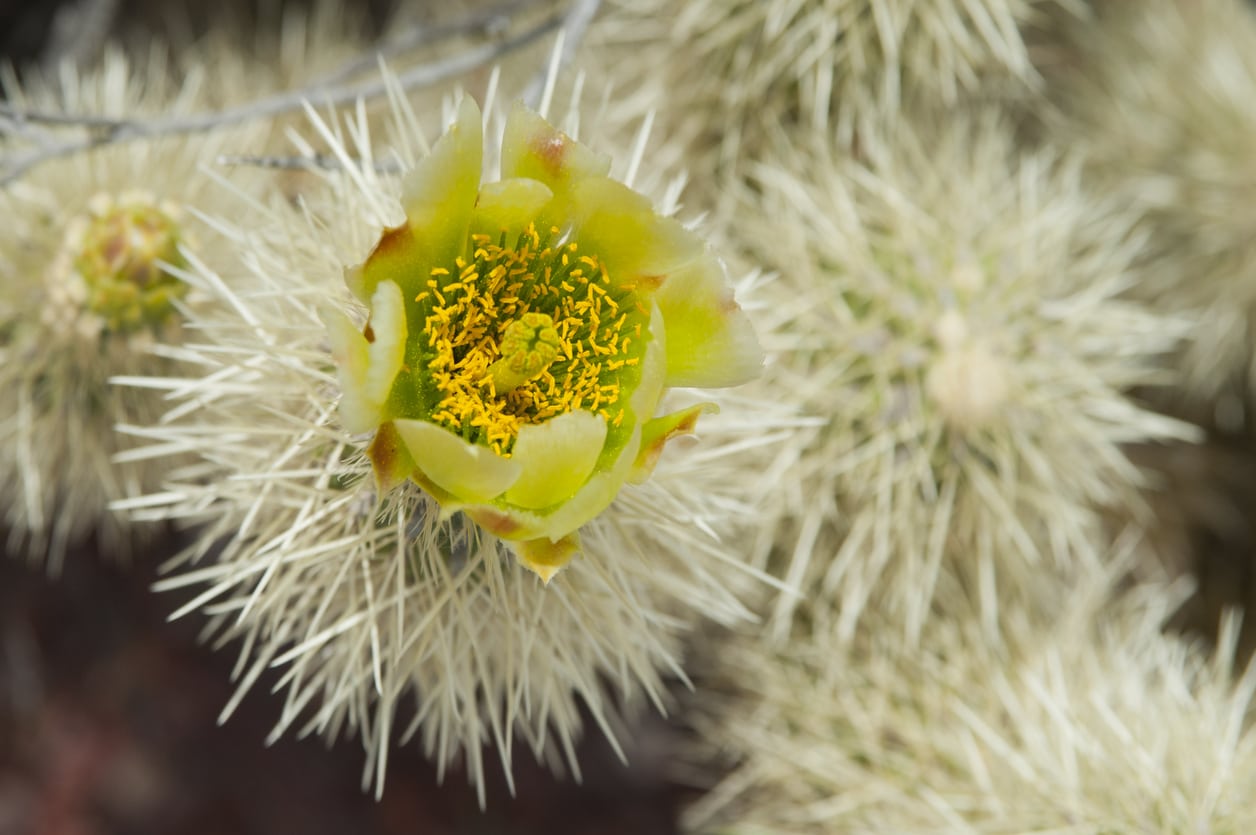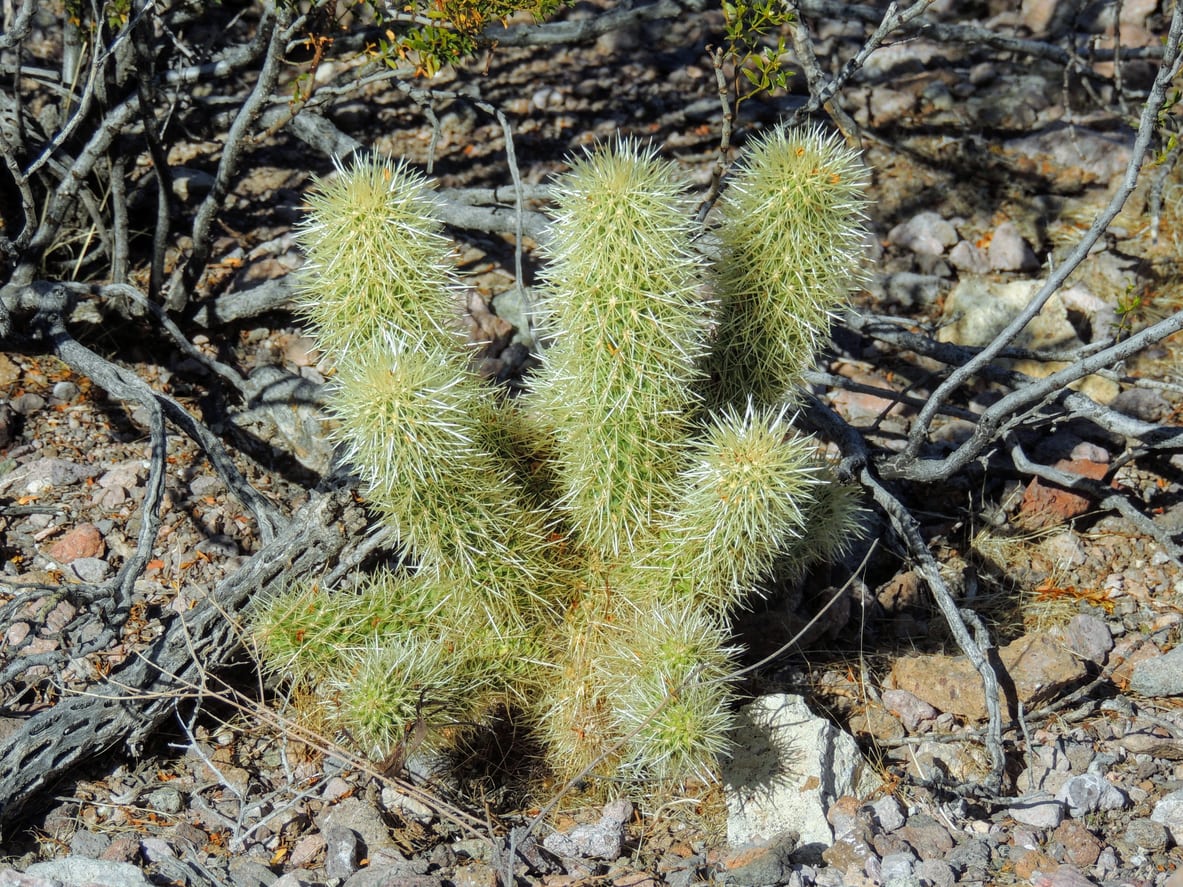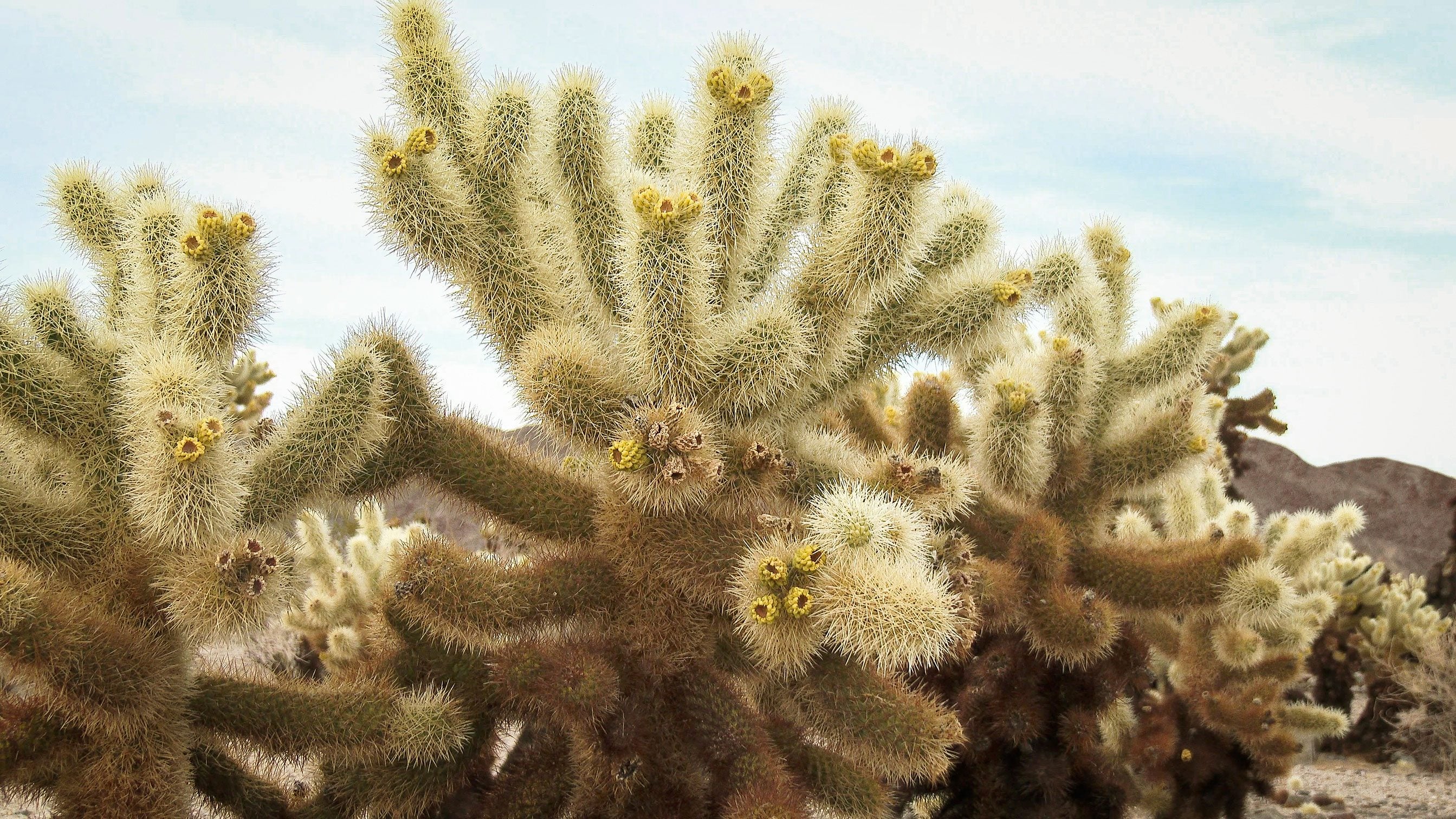Jumping Cholla Care Guide – Learn How To Grow Jumping Cholla Cacti


Jumping cholla, also known as teddy bear cholla or silver cholla, is an attractive but rather odd-looking cactus with dense masses of spines that give the cactus a teddy bear appearance, hence the cuddly nickname. Where can you grow teddy bear cholla? Growing teddy bear cholla is accustomed to desert-like conditions and is suitable for growing in USDA plant hardiness zone 8 and above. Keep in mind, however, that while the cactus looks harmless from a distance, the spines are formidable. In fact, its other common name “jumping cholla” is well deserved, as the spines seem to “jump” and grab unsuspecting passers-by. Read on for more jumping cholla info.
Jumping Cholla Information
Native to the deserts of Northwest Mexico and the southwestern United State, jumping cholla (Opuntia bigelovii syn. Cylindropuntia bigelovii) is a shrubby, tree-like cactus that can reach heights of 5 to 9 feet (1.5 to 3 m.). The spines are silvery-gold when young, turning dark brown or black with age. The plant propagates itself easily when the joints fall off or are inadvertently knocked off by people, a passing animal or even strong wind. The result, eventually, is a large, impressive stand of cactus.
How to Grow Jumping Cholla Cactus
As with most outdoor cactus, there is little jumping cholla care involved. If you’re interested in growing teddy bear cholla, be sure you can provide desert-like conditions. This cholla cactus won’t survive without dry soil and plenty of bright sunlight. Jumping cholla requires warm temperatures and several hours of bright sunlight every day. Like most desert plants, jumping cholla won’t survive in soggy conditions. Its soil must be dry and fast-draining. Teddy bear cactus requires very little supplemental water. Too little moisture is always preferable than too much. Feed teddy bear cactus occasionally using a granular fertilizer formulated for cacti and succulents, or a diluted solution of any good quality water-soluble fertilizer.
Gardening tips, videos, info and more delivered right to your inbox!
Sign up for the Gardening Know How newsletter today and receive a free copy of our e-book "How to Grow Delicious Tomatoes".

A Credentialed Garden Writer, Mary H. Dyer was with Gardening Know How in the very beginning, publishing articles as early as 2007.
-
 Looking For Plants To Give You The Soft And Fuzzies? Try These 5 Fuzzy Leaf Plant Options
Looking For Plants To Give You The Soft And Fuzzies? Try These 5 Fuzzy Leaf Plant OptionsLovers of texture, drama, silver foliage and tactile plants will adore these special sensory garden additions. These fuzzy leaf plant options will leave you all aglow
By Susan Albert
-
 Get Ready For A Summer Of Hummers! Grow These Full Sun Hummingbird Plants and Flowers
Get Ready For A Summer Of Hummers! Grow These Full Sun Hummingbird Plants and FlowersIf you’re lucky enough to enjoy a sunny backyard, make sure you are maxing out on your pollinator opportunities and grow these full sun hummingbird plants and flowers
By Tonya Barnett
-
 Chain Cholla Information – How To Grow A Chain Cholla Cactus
Chain Cholla Information – How To Grow A Chain Cholla CactusThose living in warmer climates can start growing chain cholla in their backyards. If you’d like a bit more chain cholla information, we’ll also give you tips on how to grow a chain cholla cactus. Click on the following article to learn more.
By Teo Spengler
-
 Walking Stick Cholla Info: Tips On Caring For Walking Stick Chollas
Walking Stick Cholla Info: Tips On Caring For Walking Stick ChollasAmong the varied forms of cactus, the walking stick cholla possesses one of the more unique characteristics. Learn how to grow walking stick plants and add this unique specimen to your cactus garden. Click this article for additional information.
By Bonnie L. Grant
-
 Cholla Cactus Care: Tips For Growing Cholla Cactus
Cholla Cactus Care: Tips For Growing Cholla CactusCholla is a jointed cactus in the Opuntia family, which includes prickly pears. In spite of the barbs, the plant makes an excellent addition to a southwest style garden. In this article, you'll find tips on how to grow a Cholla cactus plant.
By Bonnie L. Grant